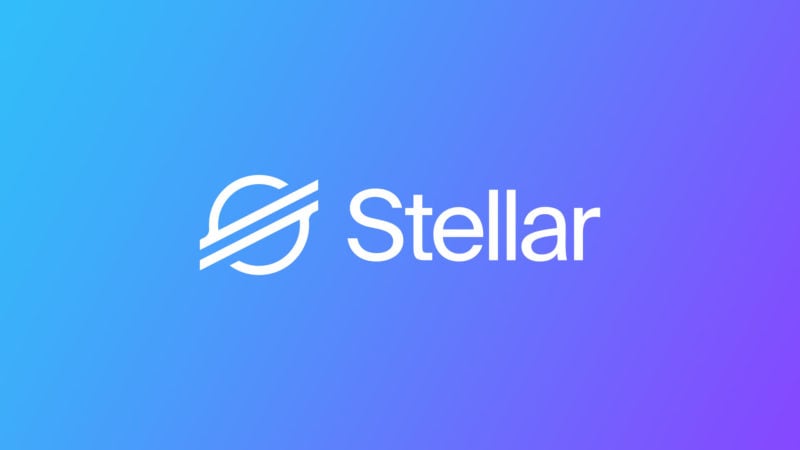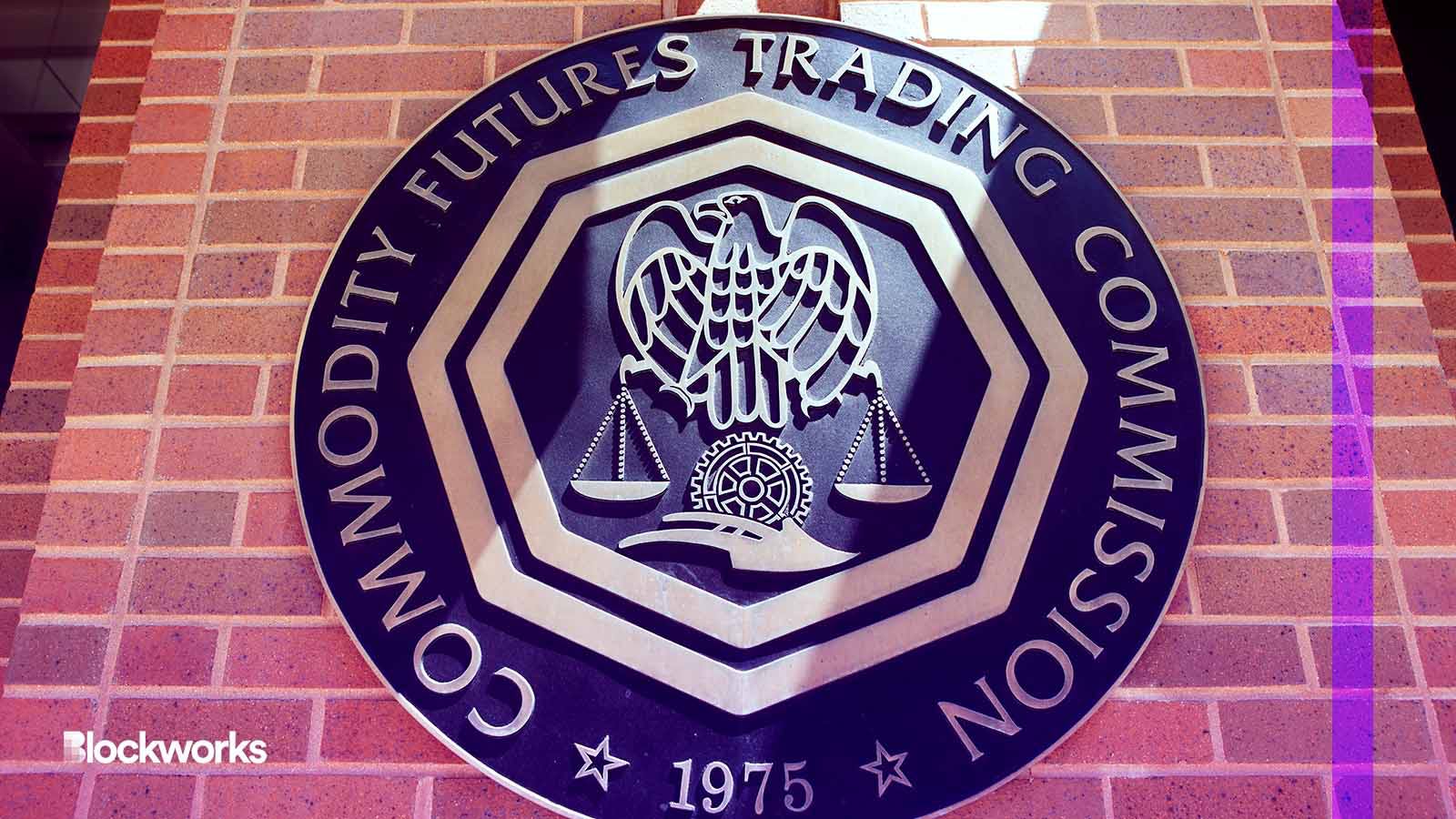The Block • Aug 15, 23
Stellar invests in MoneyGram, gets seat on board
After years of business partnership, the Stellar Development Foundation became a minority investor in payment firm MoneyGram International.
Read more



Create a Coinbase account to buy and sell Stellar Lumens on the most secure crypto exchange.
Stellar’s cryptocurrency, the Stellar Lumen (XLM), powers the Stellar payment network. Stellar aims to connect the world’s financial system, enabling businesses and developers to take advantage of the network’s fast speeds, low transaction costs, and interoperability.
Stellar (XLM) is a decentralized, peer-to-peer network established in 2014 by the Stellar Development Foundation. As a cross-border transfer and payment system that connects financial entities, Stellar aims to unite the world's financial infrastructure, connecting banks, payment systems, and individuals with near-instant and secure transfers at a minimal cost. If the Internet connected the world's computers to enable the free global flow of information, Stellar aims to do the same for money. To accomplish this vision while maintaining neutrality, Stellar is not set up as a bank or a business. Instead, it's a decentralized, open network that is supported by a nonprofit foundation called the Stellar Development Foundation (or SDF, for short). The network's native digital currency, XLM or Lumens, acts as an intermediary currency for operations and is also used to pay transaction fees.
Stellar operates on distributed ledger technology, which is open-source, community-owned, and distributed by the community. Its token, the XLM (or Lumens), fuels activity on the Stellar network — a system designed to help payments (and currencies) cross borders faster and cheaper than with traditional financial-system networks. The Stellar payment protocol achieves this by converting financial resources into XLM and then into the requested currency within a few seconds. For example, a bank in Japan might use Stellar to send money to a bank in Mexico. Stellar would automatically convert yen to XLM, send the payment via blockchain, and reconvert XLM to pesos at the current exchange rate. Stellar was intended to work alongside existing assets and cryptocurrencies, allowing users to create digital representations of any asset as a Stellar token. These can then be used to transact on the blockchain and can be redeemed at any time for the base asset. The network aims to maintain a level of security, with XLM holders required to have at least one token to remain active on the network. This feature aims to execute network transactions efficiently and with minimal time costs. As a decentralized financial network, no single entity can process transactions or stop someone from onboarding or offboarding into Stellar, and the network can still run successfully even if some servers are turned off or fail.
Stellar's potential use cases are vast, particularly in the realm of cross-border transactions. The platform aims to overcome the challenges of high fees and slow procedures associated with traditional financial systems, support multi-currency transactions, and enhance processes with foreign operations. The network also uses a development called Anchors, which simplifies the exchange within the network and accelerates the entire process.
Stellar was founded by Jed McCaleb and lawyer Joyce Kim after McCaleb left Ripple in 2013 due to disagreements about the company's future direction. McCaleb's goal was to ensure that Stellar could provide people a way of moving their fiat (governement backed money), into crypto and eliminate the friction that people normally experience when sending financial resources around the world. Jed McCaleb currently serves as Stellar's CTO. This not-for-profit organization aims to "unlock the world's economic potential by making financial transactions more fluid, markets more open, and people more empowered." Stellar was initially based on the Ripple Labs protocol, but the blockchain was created as a result of a hard fork, and the code was subsequently rewritten.
Unlike many popular cryptocurrencies, XLM cannot be mined or staked to receive rewards and increase the asset's supply. While Stellar works like technologies like Bitcoin, its key distinguishing feature is its consensus protocol. The present-day Stellar is a result of a 2014 fork that created the Stellar Consensus Protocol (SCP), following which Stellar became an open-source system. Under this protocol, the transaction authentication process is confined to a select set of trustworthy nodes rather than being left open to the whole network of nodes. Instead of being mined by "proof of work," Stellar is secured by a unique blockchain mechanism called the Stellar Consensus Protocol (SCP).
You can buy, sell, send, and receive XLM by creating an account on Coinbase — or a number of other financial technology companies. Coinbase Wallet is another option for storing, sending, and receiving XLM.
The primary role of XLM in the cryptocurrency ecosystem is to facilitate cost-efficient, cross-border, cross-asset transactions of non-monetary value. Stellar seeks to facilitate connections between banks, payment systems, and individuals. The Stellar network is designed to be used with Lumens to pay transaction and account initialization fees. Stellar also supports a distributed exchange mode, allowing users to send payments in specific currencies even though they may hold credits in another, with the network automatically performing the forex conversion. This makes Stellar a functional tool in the context of remittances and bank loans, particularly in developing economies.
The Stellar Consensus Protocol (SCP) is a mechanism used by the Stellar network to reach consensus. Unlike traditional consensus mechanisms like Proof of Work (which relies on a node’s computational power) and Proof of Stake (which depends on a node’s staking power), SCP is based on the Federated Byzantine Agreement (FBA). In the FBA system, each participating Stellar Core node, also known as a validator, decides which set of other nodes they want to trust. This user-defined trust allows for open network membership and decentralized control, meaning anyone can become a Core node and no central authority dictates whose vote is required for consensus. SCP aims to prioritize fault tolerance and safety over liveness, meaning it strives to continue operating despite node failures or malfunctions and it is intended that no two nodes agree on different values. However, there may be instances where block progression is delayed pending node agreement. This approach to consensus is one of the characteristics of SCP within the cryptocurrency space.
Stellar uses its native digital currency, Lumens (XLM), to potentially enable swift and affordable transactions. Stellar's platform is currency-agnostic, meaning it can facilitate transactions between any currency or asset, making it a potential option for cross-border transactions. It strives to reduce dependency on intermediaries, which could potentially affect costs and transaction speed. Stellar's blockchain technology also allows for near-instant payment confirmations, making it a potential choice for businesses and individuals looking for a quicker and potentially more cost-effective way to transfer assets overseas. Moreover, Stellar aims to make its network accessible and integrable with existing financial systems through partnerships with financial institutions and payment gateways.
Anchors in the Stellar network serve as vital bridges, facilitating the transition of real-world assets held off the network to a form that can be held on the network. These anchors are typically organizations with the capacity to facilitate the transfer of fiat and digital assets, such as banks, digital asset platforms, and money transfer operators. They form the global Stellar anchor network, facilitating global user interaction with various blockchain-based services. Anchors address the challenge of regional payment systems that were built to serve specific jurisdictions rather than the broader global community. By bridging their payment services to the Stellar network, anchors link the established traditional economy to the Stellar blockchain's efficiency. They facilitate services that unite the fiat and digital asset economies, facilitate the transition between fiat and digital assets, represent real-world assets as digital tokens on the network, and bridge their services to the Stellar blockchain via the network’s technical standards.
Yes, Stellar Lumens (XLM) is designed to facilitate everyday transactions. It is intended to enable quick, low-cost transactions on a global scale. Stellar Lumens is designed for various transactions including remittances, peer-to-peer payments, and account-to-account transfers among others. The Stellar network supports digital assets of any type, making it versatile for various use cases. However, the acceptance of Stellar Lumens may vary depending on the businesses and service providers. It's important to note that the Stellar network is global, and it has established relationships with various financial institutions and fintechs. The acceptance of Stellar Lumens may vary depending on the businesses and service providers.
The Stellar Development Foundation (SDF) is a non-profit organization that participates in the development and promotion of Stellar Lumens (XLM). The SDF aims to support global financial access, literacy, and inclusion. It strives to achieve this by broadening worldwide access to cost-effective financial services through the development and maintenance of technology and partnerships. The SDF is tasked with developing and maintaining a global transaction network with an emphasis on cost-effectiveness that is high quality, open-source, and publicly accessible to everyone. It also provides guidance and direction for the Stellar ecosystem, supports the use of Stellar for global transactions, and disseminates Lumens (XLM), the native asset of the Stellar ecosystem, with the intention of broadening network participation. The SDF also provides support to projects that contribute to the Stellar network's development.
The Stellar network is designed to handle scalability concerns effectively through its unique consensus protocol and network structure. Stellar uses the Stellar Consensus Protocol (SCP), a proof-of-agreement consensus mechanism that aims to offer improvements in speed, cost-effectiveness, and energy efficiency. This protocol allows the network to process transactions quickly, with an average confirmation time of around 5 seconds. The Stellar network can process up to 1000 transactions per second, comparable to the volume handled by traditional financial systems like SWIFT. The network's scalability is potentially enhanced by its capacity to incorporate nodes, distributing the processing load across a larger network. Stellar's payment channels enable off-chain transactions between two parties, reducing the number of on-chain transactions and potentially increasing scalability. These measures aim to equip the Stellar network to handle a high volume of transactions while striving to maintain speed and security.
Yes, individuals or entities have the ability to issue their own tokens on the Stellar network. This process is a fundamental aspect of Stellar, enabling the representation of various assets in a digital format for interaction within the Stellar network. This can be facilitated by a variety of participants, including banks, money service businesses, payment processors, local communities, enterprises, and individuals. The process of issuing tokens involves creating an issuing account and a distribution account, establishing a trustline, and initiating a transaction. The issuing account serves as the origin of the digital representation of the asset and remains linked to the asset's identity. The distribution account is the initial recipient of the asset. A trustline is established to specify both the issuer and the asset code. The issuing account initiates a transaction using the asset it is issuing, which results in the creation of the digital representation of the asset on the network. After issuing the asset, it is a common practice to provide information about the digital representation of the asset and its intended purpose by linking a home domain to your issuing account and making a stellar.toml file available on it.
Stellar Lumens (XLM) has established various partnerships within the financial industry. One of these collaborations is with IBM, where Stellar's blockchain technology is used to facilitate cross-border transactions in the South Pacific region. This partnership allows for the conversion of locally denominated currencies into Lumens, processed over IBM's blockchain network, and then converted into the recipient's local currency, all within a matter of seconds. Another collaboration is with ICICI Bank, one of India's largest banks. This collaboration seeks to improve the efficiency and speed of financial transactions, particularly for the underbanked populations in India. Stellar Lumens has also collaborated with Deloitte to develop digital banking solutions. A project by Stellar in collaboration with the International Rescue Committee (IRC) aims to streamline the disbursement of aid to affected areas globally. Stellar has also collaborated with DSTOQ, a FinTech company that aims to tokenize and issue digital assets on the Stellar network.
Stellar Lumens (XLM) operates within a complex and evolving regulatory environment, which can present certain risks and challenges. Regulatory decisions, particularly those from influential financial institutions like the U.S. Treasury, may influence the course of Stellar Lumens. For instance, proposals targeting foundational aspects like unhosted wallets can introduce market uncertainty, potentially leading to price volatility. However, Stellar Lumens is designed to navigate these regulatory shifts due to its compliance-friendly design, transparency, scalability, and interoperability. Stellar's network facilitates compliance with regulatory requirements, and its public ledger ensures transparency, a feature that regulators appreciate. Moreover, Stellar's ability to bridge various financial systems means it can adapt to diverse regulatory environments and requirements. Therefore, while regulatory changes can present challenges, Stellar Lumens aims to address these challenges, maintaining its commitment to financial inclusion and privacy.
Earn free crypto after making your first purchase. Terms apply.

Sum of median estimated savings and rewards earned, per user in 2021 across multiple Coinbase programs (excluding sweepstakes). This amount includes fee waivers from Coinbase One (excluding the subscription cost), rewards from Coinbase Card, and staking rewards.
Market cap
$3.2B
Volume (24h)
$68.3M
Circulating supply
28.9B XLM
Typical hold time
53 days
Popularity
#31
All time high
$0.94
Price change (1h)
-0.38%
Price change (24h)
-0.65%
Price change (7d)
-0.61%
The Block • Aug 15, 23
Stellar invests in MoneyGram, gets seat on board
After years of business partnership, the Stellar Development Foundation became a minority investor in payment firm MoneyGram International.
Read more

Blockworks • Apr 26, 23
Stellar Foundation Head ‘Still Bullish’ on US Stablecoin Law in 2023
The Stellar Development Foundation wrote a $20 million check to a Franklin Templeton Fund that runs on the Stellar blockchain. Here’s why.
Read more

CoinDesk • Mar 13, 23
Crypto Payments Specialist Stellar Bridges Fiat and Stablecoins to Polkadot
Read more

The Block • Aug 08, 22
Avalanche and Stellar Lumens tick upwards as they land on Robinhood
Retail investing app Robinhood announces the addition of two more cryptocurrencies, bringing the total number on the platform to 15.
Read more

The Block • Jun 10, 22
MoneyGram is launching a crypto-to-cash service on the Stellar blockchain
The company is working in partnership with Stellar Development Foundation, a non-profit that develops the Stellar blockchain.
Read more

The Block • Mar 15, 22
Stellar Development Foundation debuts $30 million matching fund
The fund is a branch of SDF's Enterprise Fund. It plans to match investments up to $500,000 from the lead funding source. The post Stellar Development Foundation debuts $30 million matching fund appeared first on The Block.
Read more

People who viewed Stellar Lumens tend to also view the following cryptocurrencies.
Assets with the biggest change in unique page views on coinbase.com over the past 24 hours.
A selection of cryptocurrencies in the top 50 by market cap.
A selection of the most recently added cryptocurrencies.
Of all the assets on Coinbase, these 12 are the closest to Stellar Lumens in market cap.
Here is a selection of spot and futures markets that people watch
A selection of other relevant cryptocurrencies
1,059 unique individuals are talking about Stellar Lumens and it is ranked #151 in most mentions and activity from collected posts. In the last 24 hours, across all social media platforms, Stellar Lumens has an average sentiment score of 3.5 out of 5. Finally, Stellar Lumens is becoming more newsworthy, with 0 news articles published about Stellar Lumens. This is a 0% increase in news volume compared to yesterday.
On Twitter, people are mostly neutral about Stellar Lumens. There were 45.39% of tweets with bullish sentiment compared to 7.09% of tweets with a bearish sentiment about Stellar Lumens. 47.52% of tweets were neutral about Stellar Lumens. These sentiments are based on 282 tweets.
On Reddit, Stellar Lumens was mentioned in 16 Reddit posts and there were 30 comments about Stellar Lumens. On average, there were more upvotes compared to downvotes on Reddit posts and more upvotes compared to downvotes on Reddit comments.
Powered by LunarCrush
Contributors
1,059 people
Volume rank
#151
Average Sentiment
3.5 out of 5
Tweet Count
282 people
Sentiment
45.39%
Bullish
47.52%
Neutral
7.09%
Bearish
Posts
16
Comments
30
Post Score
1,455
Comment Score
1,557
Conversion Table
XLM/CAD (Canadian Dollar)
CA$0.15
XLM/GBP (British Pound)
£0.0898
XLM/JPY (Japanese Yen)
¥17.76
XLM/BRL (Real)
R$0.57
XLM/EUR (Euro)
€0.10
XLM/NGN (Nigerian Naira)
NGN 147.97
XLM/KRW (South Korean Won)
₩154.57
Learn how we collect your information by visiting our Privacy Policy.
The price of Stellar Lumens has decreased by 0.38% in the last hour and decreased by 0.65% in the past 24 hours. Stellar Lumens’s price has also fallen by 0.61% in the past week. The current price is $0.11 per XLM with a 24-hour trading volume of $68.27M. Currently, Stellar Lumens is valued at 88.04% below its all time high of $0.94. This all-time high was the highest price paid for Stellar Lumens since its launch.
The current circulating supply of Stellar Lumens is 28,940,546,386.461 XLM which means that Stellar Lumens has as total market cap of 28,940,546,386.461.
We update our Stellar Lumens to USD currency in real-time. Get the live price of Stellar Lumens on Coinbase.
The current market cap of Stellar Lumens is $3.25B. A high market cap implies that the asset is highly valued by the market.
The all-time high of Stellar Lumens is $0.94. This all-time high is highest price paid for Stellar Lumens since it was launched.
Over the last 24 hours, the trading volume of Stellar Lumens is $68.27M.
Assets that have a similar market cap to Stellar Lumens include Stacks, Optimism, Wrapped HBAR, and many others. To see a full list, see our comparable market cap assets.
The current circulating supply of Stellar Lumens is 29 billion.
The median time that Coinbase customers hold Stellar Lumens before selling it or sending it to another account or address is 53 days.
Stellar Lumens ranks 4 among tradable assets on Coinbase. Popularity is currently based on relative market cap.
Currently, 98% of Coinbase users are buying Stellar Lumens. In other words, 98% of Coinbase customers have increased their net position in Stellar Lumens over the past 24 hours through trading.
Yes, Stellar Lumens is currently available on Coinbase’s centralized exchange. For more detailed instructions, check out our helpful how to buy Stellar Lumens guide.
Navigate the world of Ethereum Name Service (ENS) profiles. Connect, learn, and engage with the web3 community on profile.coinbase.com. Check out some of the most popular ENS profiles below.
Certain content has been prepared by third parties not affiliated with Coinbase Inc. or any of its affiliates and Coinbase is not responsible for such content. Coinbase is not liable for any errors or delays in content, or for any actions taken in reliance on any content. Information is provided for informational purposes only and is not investment advice. This is not a recommendation to buy or sell a particular digital asset or to employ a particular investment strategy. Coinbase makes no representation on the accuracy, suitability, or validity of any information provided or for a particular asset. Prices shown are for illustrative purposes only. Actual cryptocurrency prices and associated stats may vary. Data presented may reflect assets traded on Coinbase’s exchange and select other cryptocurrency exchanges.